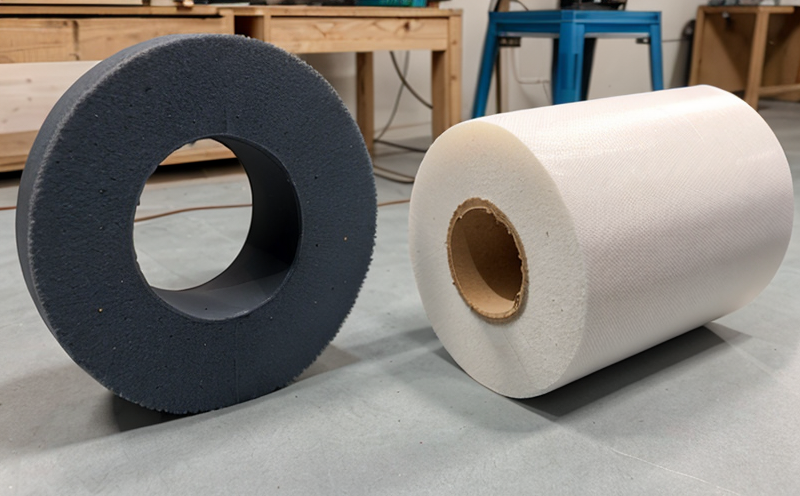ISO 527 Tensile Testing of Plastics Used in Furniture Frames and Casings
The ISO 527 tensile testing method is a critical tool for evaluating the mechanical properties of plastics, particularly those used in furniture frames and casings. This standard provides a standardized procedure to determine the tensile strength, modulus of elasticity, elongation at break, and other important mechanical characteristics that are essential for assessing material quality.
Materials like polyethylene (PE), polypropylene (PP), polystyrene (PS), and acrylonitrile butadiene styrene (ABS) are frequently used in furniture construction due to their durability and aesthetic properties. By conducting tensile testing according to ISO 527, manufacturers can ensure that these materials meet the necessary performance requirements for various applications within the furniture sector.
The test involves applying a controlled force to a specimen until it breaks or reaches its maximum elongation point. This process helps identify potential weaknesses in material design and production processes early on, enabling companies to improve product quality and reliability. For instance, understanding how different types of plastics perform under various stress conditions can inform decisions about selecting appropriate materials for specific furniture components.
Properly executing ISO 527 testing requires precise control over environmental factors such as temperature, humidity, and specimen preparation techniques. Compliance with international standards ensures accurate results that are comparable across laboratories worldwide. Accurate reporting of test outcomes is equally important; it provides valuable insights into material behavior which can be used to optimize designs or modify manufacturing processes.
Understanding the nuances involved in performing ISO 527 tensile tests is crucial for ensuring consistent quality control measures within a production environment. With detailed knowledge of proper specimen preparation, equipment calibration procedures, and interpretation of results, professionals responsible for managing material quality can make informed decisions based on reliable data derived from these tests.
Scope and Methodology
| Aspect | Description |
|---|---|
| Test Specimen Preparation | The specimen must be cut from the material sample according to specified dimensions. It should be free from defects such as cracks, inclusions, or other imperfections that could affect test results. |
| Environmental Conditions | Testing should take place at ambient temperature unless otherwise stated by the standard. Humidity levels may also need to be controlled depending on the material being tested. |
| Apparatus and Equipment | A universal testing machine (UTM) capable of applying precise forces is required along with appropriate grips for securing the specimen during the test run. |
| Data Collection | The tensile strength, elongation at break, yield point, and modulus of elasticity are all recorded during the test. These values provide insight into the mechanical properties of the material under investigation. |
| Aspect | Description |
|---|---|
| Calibration Procedures | The testing machine must be regularly calibrated to ensure accurate force measurements. This includes checking the accuracy of load cells and alignment of the crosshead. |
| Data Analysis | Post-test analysis involves reviewing collected data against specified acceptance criteria outlined in ISO 527. Any deviations from expected values could indicate issues with either sample preparation or machine performance. |
| Reporting Requirements | A comprehensive report summarizing the testing process, including environmental conditions, equipment used, and final results, should be prepared for each test run. |
Industry Applications
- Evaluating the strength of plastic components in furniture frames to ensure they can withstand normal use without breaking.
- Determining appropriate materials for casings that need to provide both aesthetic appeal and structural integrity.
- Identifying potential flaws or inconsistencies within batches of raw material before they are incorporated into finished products.
The results obtained through ISO 527 tensile testing play a significant role in quality assurance processes throughout the furniture manufacturing industry. They help manufacturers maintain high standards while continuously improving their products by identifying areas where performance can be enhanced or costs reduced without compromising safety or durability.
Quality and Reliability Assurance
Regularly performing ISO 527 tensile tests allows companies to monitor changes in material quality over time. By comparing current test results with historical data, trends can be identified that might indicate shifts in supplier performance or issues arising during manufacturing processes.
In addition to detecting problems early on, these tests serve as a valuable tool for validating new materials and formulations before they are introduced into production lines. This ensures consistency across all batches produced and helps maintain brand reputation by delivering consistently high-quality furniture items.
Adherence to international standards like ISO 527 also demonstrates commitment to excellence among clients and regulatory bodies alike, fostering trust within the supply chain ecosystem. It underscores a company's dedication to producing reliable products that meet or exceed customer expectations.





